#hans werner holzwarth
Photo
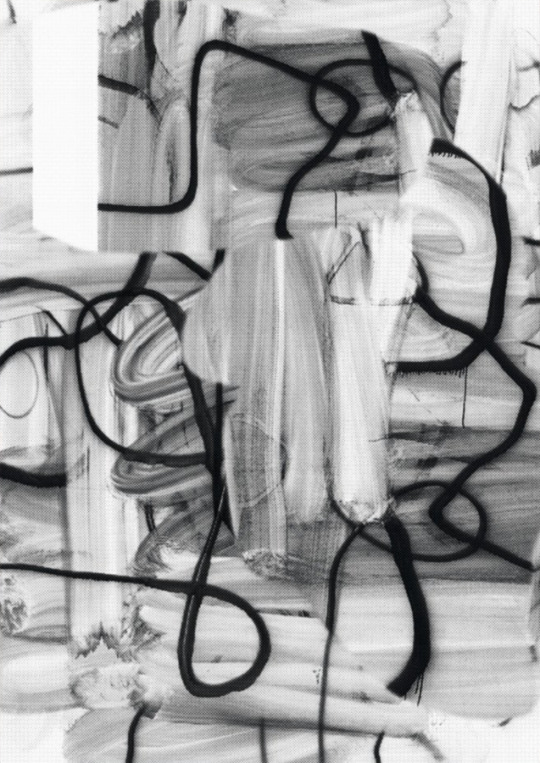


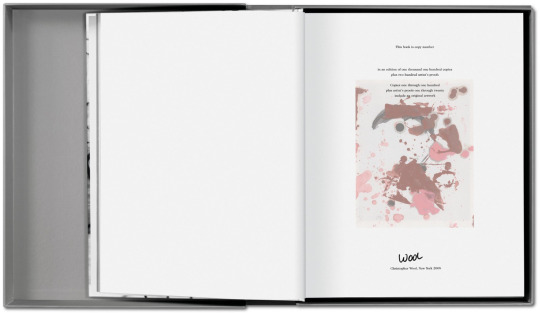



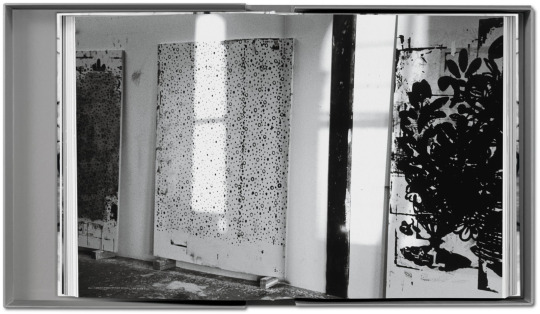
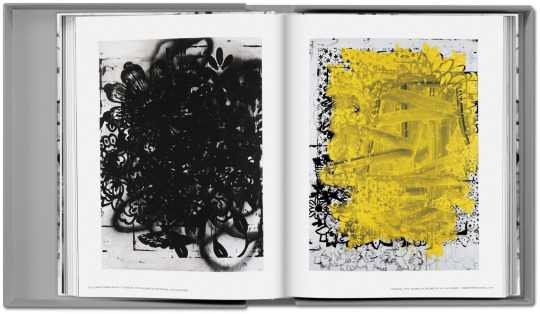

Christopher Wool, Edited by Hans Werner Holzwarth, Texts by Eric Banks, Ann Goldstein, Richard Hell, Jim Lewis, Glenn O'Brien, and Anne Pontégnie, TASCHEN, Köln, 2008, Limited Collector’s Edition of 1,000 copies, each numbered and signed by the artist
#graphic design#typography#art#visual writing#mixed media#catalogue#catalog#cover#christopher wool#hans werner holzwarth#eric banks#ann goldstein#richard hell#jim lewis#glenn o'brien#anne pontégnie#taschen#2000s
62 notes
·
View notes
Text

Lembrando, 2009
Ai Weiwei
9.000 mochilas - 9250x10605x10cm
A fachada da Haus Der Kunst, Munique: vista da instalação
A ideia de usar mochilas para Lembrando surgiu da minha visita a Sichuan após o terremoto de maio de 2008. Durante o terremoto muitas escolas ruíram. Milhares de jovens estudantes perderam a vida, e era possível ver bolsas e materiais de estudo por toda parte […] A frase nas mochilas é da carta da mãe de uma menina que morreu no terremoto, ela escreveu: “Ela viveu feliz neste mundo por sete anos.”
Ai Weiwei, citado em HOLZWARTH, Hans Werner, ed. Ai Weiwei, Cologne: Taschen, 2020, p. 402
#Ai Weiwei#weiwei#lembrando#Remembering#conceptual art#art installation#instalação#contemporary artist#contemporary art#2009#chinese#chinese art
1 note
·
View note
Text
Accumulation accompagnée
2046. ---, Jean-Michel Basquiat, Hans Werner Holzwarth & Eleanor Nairne
(Hans Werner Holzwarth & Eleanor Nairne, Jean-Michel Basquiat, --------, 1987) (Taschen, 2020)
⌘
4 notes
·
View notes
Text
HOCKNEY: SPRING CANNOT BE CANCELLED (2021) + A CHRONOLOGY (2020)
HOCKNEY: SPRING CANNOT BE CANCELLED (2021) + A CHRONOLOGY (2020)
I have to confess David Hockney always remained a bit under my radar – when I was younger and wilder, I probably thought him too conventional or so, and more importantly, it seems as if the museums I’ve visited the last 20 years in the various cities around the world didn’t have many of his paintings on display. I really cannot recall seeing a Hockney in real life – although I must have, I’m…

View On WordPress
#2020s#Art#Art books#Contemporary Art#David Hockney#David Hockney in Normandy#David Hockney. A Chronology.#Hans Werner Holzwarth#Lutz Eitel#Martin Gayford#Non-fiction#Painting#Spring Cannot Be Cancelled#Visual Art
0 notes
Photo










Fazal Sheikh A Camel for the Son
Texts and Photographs Fazal Sheikh
Editing Liz Jobey, Design Hans Werner Holzwarth
Steidl, Göttingen 2001, hardcover, ISBN 0-9707613-0-9
euro 30,00
email if you want to buy :[email protected]
A Camel for the Son is the first in a series of projects intented to further awareness of international human right issues. A Camel for the Son brings together two bodies of work: the first, a series of photographs made in Somali refugee camps in eastern Kenya between 1992 and 1994; the second, a series made nearly a decade later, after those camps had been consolidated around the town of Dadaab.On his earlier trips Fazal Sheikh had made a series of portraits of mothers and their babies at the feeding center in Mandera.When he returned in 2000, he found some of the same women and their children – now approaching puberty – still living in the camps. One of the main problems suffered by women in the camps was that they were being sexually assaulted – by Kenyans and by men from their own groups – when they went beyond the perimeter to find firewood.
29/06/21
orders to: [email protected]
ordini a: [email protected]
twitter: @fashionbooksmi
instagram: fashionbooksmilano, designbooksmilano tumblr: fashionbooksmilano, designbooksmilano
#Fazal Sheikh#Somali refugee camps#mothers and their sons#Kenya 1992-1994#photography books#libri di fotografia#fashionbooksmilano
17 notes
·
View notes
Quote
Oh, you've no idea what I look like when I'm on my own looking in a mirror. You've no idea what I see.
David HOCKNEY,
in «True to life, Twenty-five years of conversations with David Hockney»,
by Laurence Weschler, University of California Press, 2008
cité in «David Hockney. A Chronology»,
sous la direction de Hans Werner Holzwarth,
Éditions Taschen, Köln, 2020, p.330.
31 notes
·
View notes
Text

Jean-Michel Basquiat
Get up close to the bold brushwork and scribbled words of Jean-Michel Basquiat, one of the most successful artists of his time. This XXL-sized monograph gathers Basquiat’s major works in pristine reproduction. Texts by editor Hans Werner Holzwarth and curator and art historian Eleanor Nairne introduce us to a legend synonymous with 1980s New York.
#jean-michel basquiat#80s new wave#east village#contemporary art#new york art#east village art#expensive books#coffee table books
1 note
·
View note
Text

Book of the month / 2020 / 01 January
I love books. Even though I hardly read any. Because my library is more like a collection of tomes, coffee-table books, limited editions... in short: books in which not "only" the content counts, but also the editorial performance, the presentation, the curating of the topic - the book as a total work of art itself.
Ai Weiwei
Ai Weiwei & Hans Werner Holzwarth
Art / 2014 / Taschen
"Living Art on the Edge".
This monumental monograph is literally one of the largest books I own: 33 x 44 cm, 724 pages, weighing almost 10 kg...
“What Picasso was to the 20th century, Ai Weiwei is to the 21st, and if our century is to be the Chinese Century, then it’s fitting that the greatest artist of the age is Chinese. TASCHEN’s new book, meticulously edited and lavishly produced, is the closest you’re going to get to an appreciation of Ai’s work without actually attending one of his exhibitions.” (Kyoto-Journal). Nevertheless, I know his art live, for example at the documenta in Kassel in 2007 or at the Martin-Gropius-Bau in Berlin in 2014.
Yet Weiwei is more than an artist. He thematises, provokes, accuses. He's affected, uncomfortable, rebellious. No wonder he was in prison in China. And of course he has artistically presented this again. He is a prime example of why I prefer contemporary art to classical visual art: while the masterly brushstroke and the perfectly captured mood of the light in the umpteenth oil ham of the Infanta of Spain is certainly interesting, modern art, in addition to its craft aspects, also offers the opportunity to deal with it and its often (socio)political statement, to rub against its message, to share the symbolic point of view - or not.
A successful example of this is the 2008 earthquake in Sichuan and the way Weiwei dealt with it. Historically, botch-ups in construction, which were encouraged by corruption of the responsible authorities, claimed many lives. Weiwei and his team salvaged bent steel reinforcements from the concrete rubble and - as it were a revitalization - straightened and smoothed them out again to present them to an accusation (equal to the number of people killed) as exhibit, hence the name of the work "Straight".
This book in turn (in its limited edition, numbered and signed by the artist himself) is wrapped and knotted in a cloth made of Habotai silk, on which a picture of "Straight" is printed. The art consumer, like the work itself, must first unravel and smooth this out before he can enjoy the monograph itself, then with a knowing toilet in his throat. And that is only one of the highlights of this magnificent folio. If the question arises: no, I am not lending this book. But show it gladly and proudly when you visit me. :-)
Here is the link to the book on the official website of (my favourite) publisher Taschen:
https://www.taschen.com/pages/en/catalogue/art/all/03122/facts.ai_weiwei.htm
1 note
·
View note
Text
blog 1
As I sit and stare at my desk, I take form its inspiration for my first blog post. The first thing to catch my eye is a postcard of Kurt Schwitters performing the ‘Ursonate’ in London 1944, a sound poem. Not very current I think at, but relevant none the less... In the back of my mind, as time goes on he’s always there . Every time I see ‘found’ work I think Schwitters, pieces gathered fragment to make a whole. I think before I continue this is a metaphor for my starting this blog, this course, my life as a week rolls into the next, I am a whole made up of bits of experiences. At times it’s noisy!
My wish is that this course leads me to feel more whole, active, valid. I could be ‘an entire worked on piece, to show.’ For those who haven’t come across Schwitters, he was a canon in collage art. Born in Germany in 1887, he was prolific after the first world war He used 3d objects such as machinery he may have come across while working as a technical draughtsman in the ironworks such as Cogs, wheels chains. He would overpaint these to make a composition, the most famous of which named MERZ 29A. He created Merz Magazine and other groupings under the Merz name, the word meaning ‘the summarisation of all conceivable materials for artistic purposes , and technically the – on principle- equal valuation of the individual materials. (Elger et al.,
Modern Art
.p288) This period of artists was known as DADAISTS, I remind myself that their conscience was born out of the political post-war trauma . I think about the continuing wars in the world today, perhaps a Schwitter’s onomatopoeic drill of sounds could relate to the shock of today. He thrashed art into a more garbled state to reflect the nonsensical war time. Artists need to abandon typical techniques reflect that life wasn’t typical. I’m caused to think about the ‘playroom’ or the session with a client. As therapists we must imagine nothing, so the client can bring anything into the room ,so that nothing is ‘typical’ and anything is possible. This will be a challenge of course, to leave our sense of the ‘norm’ and judgements aside. But it is ascribed to us in our role. I’ve looked at this in my previous work with children, and in my current work now , I reflect on the work of Carl Rogers, the ground-breaking humanist counsellor’s core conditions: congruence, empathy and unconditional positive regard. Being in the here and now with the client will allow us to focus on what is in front of us without preconceptions. These are powerful tools for artists, for where we are today in parallel to the Dadaists, the unknown is an anxious place. At this time, we are facing a devastation politically in Britain, with families divided and politicians being bizarre. Dadaists couldn’t change politics, end war, chase people into revolution, so they created a way of smashing structures in art and language. We have a vote, which wither way will crush the spirit of this country. Dada makes me think of the XR movement of today, non -violent, confused and scared. Thousands of people in peaceful protest about the climate and inaction. People, who are anyone dancing, standing, gluing themselves to the floor, being counted. It’s what we can do as a race, stand together as one voice. Today’s rebel rousing XR spirit of the people, who have organised a nationwide art group to create the spirit of activism through art.
This group could provide a place to put those anxieties to use, in a creative way. Art therapy, we could say. How does Schwitters inform my art? At present I’m not making any, but it’s my go to. I’m handling a little creativity now, thankfully my job makes me. The last piece of considered work I did was for my wedding anniversary in September 2019.I chose a combination of cowgirls and mgm classic movie pictures to cut and stick onto a poster in a collage style. What came of it were various versions of exhilaration, dread, hysteria and joy. I combined it with images of the place we got married, ‘the Tunnel of Love at’ the Little White Wedding Chapel in Las Vegas. It was a humorous, honest piece. Long Relationships are not icing, and love hearts and sweet pink poems, they are a bit of that and a lot of other wrangling’s. Such is the this, the that, the uncontrollable, the flash, the caught in the corner of your eye. It’s the gathering of the hum. To me Schwitters informs my practise today, and the spirit of finding your own language is not derelict. The medium is the message . The following are extracts of this collage.
Elger, Dietmar, Christopher Cordy, Laszlo Taschen, and Hans Werner Holzwarth, eds. Modern Art. Bibliotheca Universalis. Köln: Taschen, 2016
Elger, Dietmar, Christopher Cordy, Laszlo Taschen, and Hans Werner Holzwarth, eds. Modern Art. Bibliotheca Universalis. Köln: Taschen, 2016
1 note
·
View note
Link
This special two-volume edition features 100 of the most exciting artists from TASCHEN’s seminal Art at the Turn of the Millennium and the renowned Art Now! series―gathered in a comprehensive survey of contemporary art at the start of the 21st century.
0 notes
Photo

From: Christopher Wool, Edited by Hans Werner Holzwarth, Texts by Eric Banks, Ann Goldstein, Richard Hell, Jim Lewis, Glenn O'Brien, and Anne Pontégnie, TASCHEN, Köln, 2008, Proof outside the deluxe edition of 100 [MoMA, New York, NY]
#graphic design#art#visual writing#drawing#catalogue#catalog#hans werner holzwarth#christopher wool#eric banks#ann goldstein#richard hell#jim lewis#glenn o'brien#anne pontégnie#taschen#moma#the museum of modern art#2010s
60 notes
·
View notes
Text
[BOOK] Basquiat. 40th Anniversary Edition ReadOnline
[PDF] Download Ebook | READ ONLINE Basquiat. 40th Anniversary Editionbody {font-family: Helvetica, Arial, sans-serif;}#example1 {border: 2px solid black;padding: 25px;background: lightblue;background-repeat: no-repeat;background-size: 100% 100%;}nav {margin:auto;text-align: left;width: 80%;font-family: roboto;}nav ul {list-style: none;position: relative;display: inline-table;width: 80%;}nav ul li{float:left;}nav ul li:hover{background:#FFFF00;}nav ul li:hover a{color:#000;}nav ul li a{display: block;padding: 25px;color: black;text-decoration: none;}p{position:absolute;top: 20px;z-index: 2;color: black;background-color:yellow;}[BOOK] Basquiat. 40th Anniversary Edition ReadOnline
Basquiat. 40th Anniversary Edition
[PDF] Download Basquiat. 40th Anniversary Edition Ebook | READ ONLINE
Author : Eleanor Nairne
Publisher :
ISBN : 3836580926
Publication Date : --
Language : ger
Pages : 512
To Download or Read this book, click link below:
http://read.ebookcollection.space/?book=3836580926
READ PDF EBOOK
Synopsis : [BOOK] Basquiat. 40th Anniversary Edition ReadOnline
Bis zum heutigen Tag hat das Werk Jean-Michel Basquiats (1960-1988) nichts von seiner Frische, Spontaneität und Kraft eingebüßt. Der Künstler trat erstmals in den späten 1970er Jahren in der New Yorker Kunstszene unter dem tag-Namen SAMO in Erscheinung, als er sarkastische Kommentare und Gedichtfragmente an die Wände der Stadt sprühte. Als diese Untergrundszene, geprägt von Street-Art, HipHop, Post-Punk und DIY-Filmemachern, in immer etabliertere Kreise vordrang, fand Basquiats ausdrucksstarke Malerei große Beachtung in der Kunstwelt. Bereits 1981 war er in wichtigen New Yorker Galerien vertreten und bald danach weltweit ein Begriff. 1983 begann seine Zusammenarbeit mit dem damals größten Star der Kunstszene, Andy Warhol, und 1985 zierte Basquiat das Titelbild des New York Times Magazine. Als er im Alter von nur 27 Jahren starb, war er einer der erfolgreichsten Künstler seiner Zeit.Basquiats persönlicher, expressiver Stil setzt sich aus groben Figurzeichnungen und ins Bildfeld integrierten Wörtern und Phrasen zusammen. Inspiriert von den Stars des Jazz, berühmten Boxern oder Basketballspielern, enthält sein Werk eine Vielzahl von Verweisen auf die Geschichte und Politik des street life. So lautete die Antwort Basquiats auf die Frage nach seinen Themen: „Könige, Heldentum und die Straße.“Nach unserem XXL-Bestseller über Leben und Werk Jean-Michel Basquiats erscheint nun zum 40-jährigen Jubiläum von TASCHEN diese leicht gekürzte, kompaktere Ausgabe. Hervorragende Reproduktionen seiner Gemälde, Zeichnungen und Notizbuchskizzen ermöglichen ein genaues Studium von Basquiats verschlungenen Zeichen und gekritzelten Wortfragmenten. Der Band enthält eine Einleitung des Herausgebers Hans Werner Holzwarth zum Künstler sowie einen Essay der Kuratorin Eleanor Nairne über Basquiats Themen und künstlerische Entwicklung. Die reichhaltig illustrierten Kapitel folgen den Lebensjahren des Künstlers, zitieren eigene Aussagen sowie zeitgenössische Rezensionen und erläutern persönliche Hintergründe und den historischen Kontext.
0 notes
Photo

☀️El topito que quería saber quién se había hecho aquello en su cabeza. . 🔍Durante toda la historia el topito investiga quién es el culpable de su enojo. Porque una mañana, apenas amanece, el topito asoma su cabeza en la superficie y sucedió que "redondo y café era ESO, pero ESO no era una salchicha. Era simplemente ESO: redondo, café y oloroso". . 🐮A cada animal que encuentra le pregunta si fue el que se hizo en su cabeza. Y los animales le van contando que no han sido, al tiempo que le muestran cómo lo hacen ellos. . 🤭Si no fuera por las moscas el topito no sabría aún quién lo hizo. Ni bien lo descubre toma venganza. A su manera, y le obsequia un ESO pero tamaño Topito. . 📃La primera edición es de 1989 y aunque ahora no parezca raro un libro sobre la "caca", creemos que si lo era antes. Y este es uno de esos libros que toman la delantera. . Los autores de este álbum son Werner Holzwarth y Wolf Erlbruch. . Y esta traducción es de Sebastián Vargas para Libros del zorro rojo. . #loslibrossalvajes #topitobirolo #librosdelzorrorojo #lij #desenfado #experienciaslectoras #clubdelectura https://www.instagram.com/p/COvg4xmtmN0/?utm_medium=tumblr
0 notes
Text
Book Review: Jean-Michel Basquiat XXL


author: Hans Werner Holzwarth
name: Sergio
average rating: 4.80
book published:
rating: 5
read at:
date added: 2020/08/26
shelves: art, non-fiction, owned
review:
Published on: August 26, 2020 at 12:34PM. Read more via https://ift.tt/2YDjBex on GoodReads.
0 notes
Photo
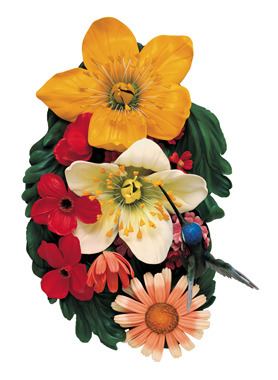
From a lush bed of verdant green leaves, bright wildflowers spring forth, animating Jeff Koons’ Wall Relief with Bird (1991). Emanating vibrant hues of red, pink, white and yellow, these wondrous flowers appear to take on a life beyond their polychromed wood material; their petals reach outward and seemingly bloom before our eyes. At the center of the relief, the viewer observes an idyll of nature: a happy hummingbird flutters about the large white blossom, sipping of its nectar. Indeed to see a hummingbird—one of the animal kingdom’s most nimble and brightly colored members—is joyous, and in this instance the bird’s presence effortlessly completes Koons’ utopian image. Here, the natural world is an idealized paradise, and in turn, life and abundance are clearly celebrated. Koons further explains, “In Wall Relief with Bird there is a bird pollinating these large flowers. The imagery to me is about penetration. It’s also about fertility and pollination, and the eternal.” (Exh. Cat., New York, The Metropolitan Museum of Art, Regarding Warhol, 2012, p. 197) As such, Wall Relief with Bird is underscored by an omnipresent sense of sexuality. These seductive flowers are more than just brightly decorated and lively sculptures—they welcome pollination, opening outward from the wall to entice the viewer to move closer; they embody what author Daniel Pinchbeck rightly calls “an uncanny aliveness.” (Exh. Cat., New York, Gagosian Gallery, Jeff Koons Andy Warhol Flowers, 2001, p. 6)
Though Wall Relief with Bird thus stands on its own as an impressive and engaging work of art, it is all the more desirable for its inclusion in Koons’ famed body of work, Made in Heaven (1989-1991). This large, overtly sexual and often unapologetically graphic series grew from a simple seed when the Whitney Museum of American Art invited Koons to create a billboard for the 1989 media and contemporary art themed exhibition, Image World. Focusing on the pornography industry, Koons enlisted international porn star Ilona Staller as his collaborator, and the resulting billboard (a steamy movie advertisement featuring the duo) served as the inspiration for what became a prolific creative endeavor. Unveiled in its entirety at Sonnabend Gallery in 1991, Made in Heaven juxtaposed explicit sexual images of Koons and Staller—male orgasm, oral penetration and genitalia close-ups, to name but a few—with cheerful, brightly colored neo-kitsch statues of puppies and flowers. Three Puppies, Yorkshire Terriers and Large Vase of Flowers were, like Wall Relief with Bird, crucial and friendly counterpoints to the X-rated escapades detailed throughout the rest of the exhibition. The overall effect, needless to say, was shocking, and exhibition attendance skyrocketed.
More than that, with the Made in Heaven series, Koons successfully blurred the lines between art, life and media—and he did so to an extent far beyond that of any of his predecessors. His real life romance with Staller, most notably, was highly publicized as it grew from an artist-muse relationship to an eventual marriage. When they married in Budapest, the nuptial ceremony was covered by news meida globally in more than one thousand articles. Curator Scott Rothkopf succinctly reiterates this point by writing of Koons, “He responded to and helped shape the zeitgeist by abrading the distinction between the content of his work and the media spectacle it inspired.” (Exh. Cat., London, Tate Modern, Pop Life, 2009, p. 44)
Meanwhile, the zeitgeist of the '90s was also deeply defined by the transgressive agendas of Koons’ contemporaries in the face of political conservatism. Robert Mapplethorpe, for one, provoked outrage in the early part of the decade when he exhibited the homoerotic photographs of X Portfolio; Andres Serrano’s Piss Christ (1987) likewise met scandal when it was shown in 1989. But whereas Mapplethorpe’s and Serrano’s art faced censorship as a result of its taboo content, Koons’ Pop culture aesthetic at once differentiated his work and sidestepped political controversy. Art historian Katy Siegel explains, “The props, colors, and sentiments of Made in Heaven all speak of the middle class. The images were not rendered in voguish grainy video or artsy snapshots, but rather in high production-value craft media like glass and carved wood, as well as oil (inks) on canvas. And they were accompanied by super-saccharine sculptures of floral arrangements and dogs, looking as if they had wandered in from a Disney movie.” (Hans Werner Holzwarth, ed., Jeff Koons, Cologne, 2009, p. 310)
Wall Relief with Bird is no doubt one such sculpture. Not purely Edenic, but in actuality skewed by mass media, commercialism and artificiality, this relief ultimately displays what curator Mark Rosenthal calls, “a kind of unnatural glitz.” Like Andy Warhol’s flower paintings before (which Rosenthal considers to “have a kind of false exquisiteness in comparison to any flowers from life”), Koons’ floral relief similarly conveys a sort of synthetic lushness. (Exh. Cat. New York, Op. Cit., p. 135) This falsity, it can be argued, has also infiltrated our cultural reception of sex. Koons’ decision to contrast cartoonish pets, birds and flowers with images of raw sexuality therefore functions as commentary on our naïve relationship to sex—this is a dramatic clash of fantasy and reality. Curator John Caldwell clarifies, “Sex, probably more than any other element in our culture, exists for us today as an amalgam of what we know from experience and what we know from the image world of television, advertising and the movies.” (Exh. Cat., San Francisco, San Francisco Museum of Modern Art, Jeff Koons, 1992, p.140)
Of course, Koons’ romantic portrayal of sexuality and love is not entirely a contemporary phenomenon. On the contrary, it is informed by rich artistic traditions rooted in the Baroque, Rococo and Romantic periods. The atmospheric green, white and pink palette of Wall Relief with Bird specifically calls to mind the blissful gardens of Fragonard’s lovers. Its evocation of the Rococo masterpieces is so powerful that it comes as no surprise Koons began to work with genuine living flowers (notably the critically acclaimed and monumental Puppy of 1992) directly after creating Wall Relief with Bird.
0 notes
Text
The Life and Works of Jean-Michel Basquiat: A Supersized New Book From TASCHEN
Jean-Michel Basquiat, Hans Werner Holzwarth, Eleanor Nairne Hardcover, 29 x 39.5 cm, 500 pages US$ 200 | £ 150 | € 150, All images courtesy of TASCHEN A new addition to TASCHEN’s art catalog is a massive 500-page edition that showcases…
The post The Life and Works of Jean-Michel Basquiat: A Supersized New Book From TASCHEN appeared first on AWorkstation.com.
source https://aworkstation.com/the-life-and-works-of-jean-michel-basquiat-a-supersized-new-book-from-taschen/
0 notes